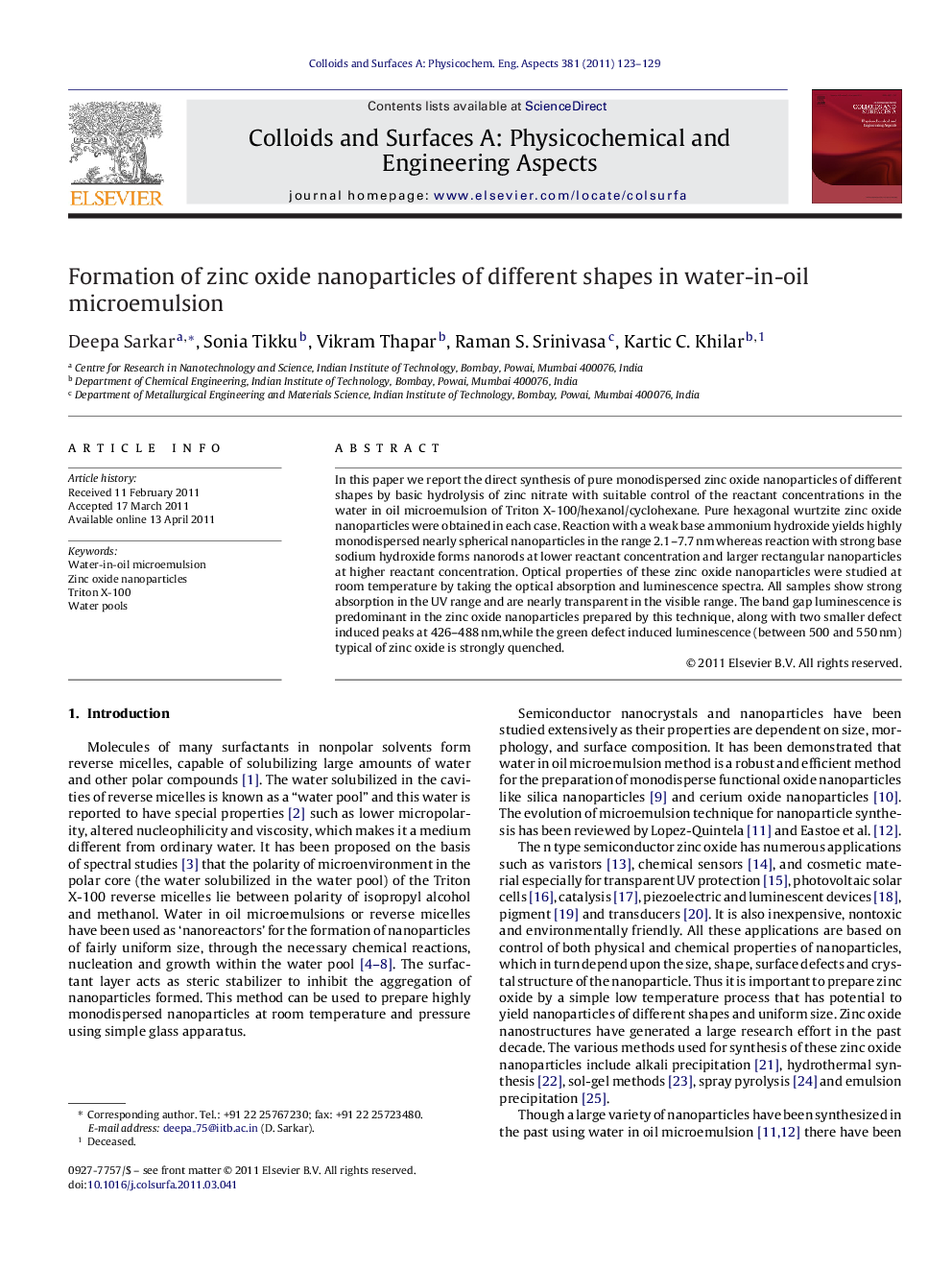| Article ID | Journal | Published Year | Pages | File Type |
|---|---|---|---|---|
| 594888 | Colloids and Surfaces A: Physicochemical and Engineering Aspects | 2011 | 7 Pages |
In this paper we report the direct synthesis of pure monodispersed zinc oxide nanoparticles of different shapes by basic hydrolysis of zinc nitrate with suitable control of the reactant concentrations in the water in oil microemulsion of Triton X-100/hexanol/cyclohexane. Pure hexagonal wurtzite zinc oxide nanoparticles were obtained in each case. Reaction with a weak base ammonium hydroxide yields highly monodispersed nearly spherical nanoparticles in the range 2.1–7.7 nm whereas reaction with strong base sodium hydroxide forms nanorods at lower reactant concentration and larger rectangular nanoparticles at higher reactant concentration. Optical properties of these zinc oxide nanoparticles were studied at room temperature by taking the optical absorption and luminescence spectra. All samples show strong absorption in the UV range and are nearly transparent in the visible range. The band gap luminescence is predominant in the zinc oxide nanoparticles prepared by this technique, along with two smaller defect induced peaks at 426–488 nm,while the green defect induced luminescence (between 500 and 550 nm) typical of zinc oxide is strongly quenched.
Graphical abstractChange in shape of zinc oxide nanoparticles with increasing OH− concentration, synthesized in Triton X-100 microemulsions.Figure optionsDownload full-size imageDownload as PowerPoint slideHighlights► Synthesis of nano-ZnO in TX-100 microemulsions at room temperature by basic hydrolysis of zinc nitrate. ► Shape of the ZnO depends upon concentration of OH−. ► Weak base ammonium hydroxide yields spherical nanoparticles in the range 2.1–7.7 nm. ► Strong base NaOH yields needle shaped to rectangular nanoparticles. ► Study of optical absorption and luminescence spectra of ZnO nanoparticles.
